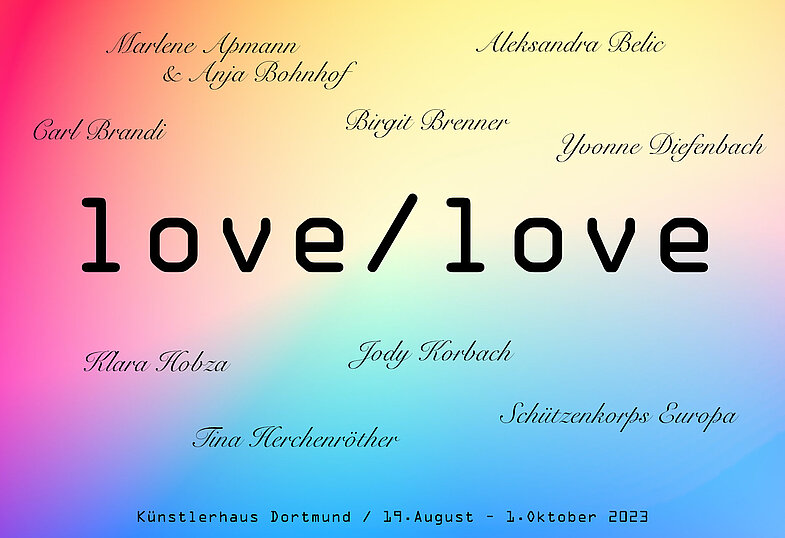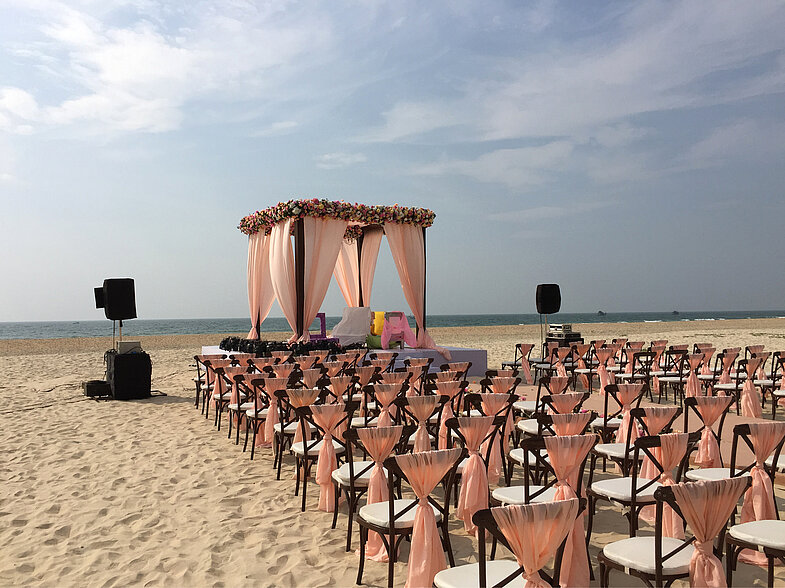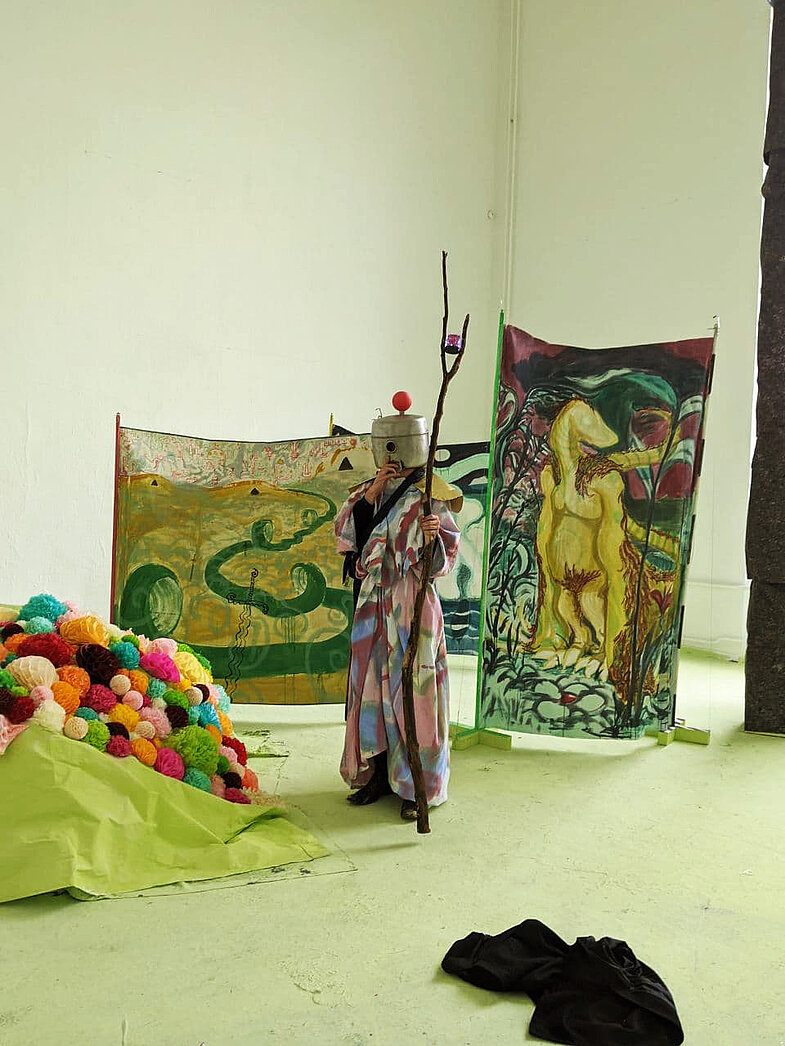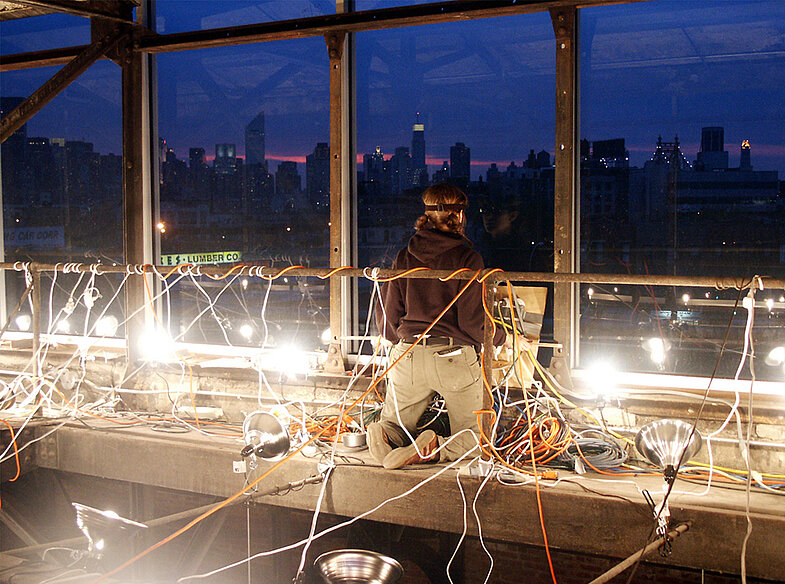
Love is a mystery and has always been unfathomable - despite countless love songs, relationship guides and dating shows on reality TV. And it is becoming even more complex: elite partners and Tinder, collective loneliness, marriage and polyamory, boomers and GenZ, cis and queer - how one lives and loves is being thought about, discussed and questioned in a whole new way today. In the inclusive and participatory exhibition love/love, artists present paintings, chemigrams, videos, installations and performances on the theme of love. The artists, their positions and works are as diverse as love itself. In talks and guided tours for singles - and everyone else - the visitors help to shape love/love through their presence. The Künstlerhaus becomes a walk-in stage.



Arranged marriages are common practice in India. In the urban middle class, however, love marriages are also increasingly being concluded. Overall, there is a growing trend towards staging wedding celebrations as an elaborately designed event; the venues, large halls or even tents are transformed into Indian dream worlds with the help of scenery architects. For those who are among the wealthy, the illusionary world of the wedding industry knows no bounds. The photographic project has been realized in 2014 together with Marlene Apmann in Bangalore.
In the project love comes later marriage is considered through both contexts and characters. Some of the photographs show aspects of the venues, festival halls and ballrooms before and after these major celebrations. The other part of the series includes portraits of Indian women, taken months or decades after their marriages. The women are dressed in their wedding saris and decorated with their wedding jewellery, when possible. These former brides come from different religious backgrounds and castes. All are still married. And some of them found love. In these portraits, they are much more relaxed than they were on their weddings.
www.fotografie-marlene-apmann.de
www.bohnhofphoto.de
www.galerie-m.com/artist_image.php?aid=202&aname=AnjaBohnhof
Aleksandra Belic's approach to art is a specifically personal path to the universal, but the specifics come with such speed that the unapologetic and direct nature of her painting challenges the viewer. The artist uses her own relationships and experiences as a source of inspiration, with the focus just off the centerpoint of social norms and conformisms. Her work follows the story of a complicated woman, expressing female fragility and strength, in a world where lust wins and love is lost.

For the exhibition love/love, Carl Brandi has written and produced the live role-play Idunas Äpfel. It tells of wondrous and terrifying connections between Germanic mythology, soccer romance and conspiracy theories. Through mechanics borrowed from archaeology and computer games, an experienceable story is created that fits seamlessly into the rooms of the Künstlerhaus and its surroundings. The plot and its realisation are based on basic romantic needs. In free role-play, visitors have the opportunity to explore their feelings of belonging, being in love, youthfulness, their social idealisation - and the romantic desire that conspiracy myths exploit in their followers.
Through lovingly crafted props and costumes, the unreal claims in Brandi's tales become temporarily real, breaking a breach of possibility and fantasy into the world of fact. For love/love, this live role-play will run for 3 weekends and the finale for a whole week, with performers present and in play to take visitors into the narrative at any time, send them on investigative missions and let them decipher further parts of the adventure.

Birgit Brenner (*1964 in Ulm) consistently deals with social issues in the fields of ecology, economy and social affairs, both in terms of content and form. She covers a wide range of topics such as injustice, coercion, failure, violence and fear, promises of happiness, surveillance and diversity. In recent years, she has broadened her focus to include themes such as digitalisation, the environment and dystopia. She has developed a unique visual language that is not limited to one medium. Through stop-motion films, which she has created in recent years, Brenner creates a dystopian image of our times, sometimes subtly, sometimes directly, but never didactically. What seems beautiful and harmless at first glance becomes a painful critique in the blink of an eye. In her film "Final Call“ from 2020, she explores the serious social consequences of the alienation of contemporary humanity and the rapid destruction of the world.
www.eigen-art.com/kuenstlerinnen/birgit-brenner/arbeiten/installationen

Yvonne Diefenbach processes stereotypical image material of erotic representations of the female body. In her playful approach, the motifs break away from predefined clichés and escape a voyeuristic, sexist gaze, in which the figure always retains her sovereignty.

In her works Tina Herchenröther pursues a performative approach. Her physical expression in gestures and poses can be found as a direct model in her drawings and paintings. In doing so, she makes a special connection with certain characters of pop culture, adopting their posture while at the same time overwriting their identity Herchenröther's fearless use of material and technique provides each image with enough space for the unexpected and the intuitive. Born in Frankfurt in 1998, she lives and works in her native city.

From the text Five sections for Klara Hobza by Gregory Volk:
"In 2003 Klara Hobza grew obsessed with Samuel Morse and Morse code, which she learned, and she built a modest, homemade light system to blink her messages out to New York, thus juxtaposing long distance communication rooted in the 19th century with 21st century life inundated by such communication, including cell phones, smart phones, texting, the Internet, and social networking sites. Not surprisingly, no one answered; once exceptionally important, Morse code is well on its way toward obsolescence. Undaunted, Hobza persevered. She upped the ante, and built a new, larger structure fitted with some 1,200 lights emitting 30,000 watts of electricity, which she installed in the clerestory at SculptureCenter in Long Island City. By manipulating her construction, she temporarily turned the whole top of the building into a flashing, blinking, illuminated force, dispensing coded messages to the surrounding city, and this is when she finally got a few responses blinking car lights, car horns, flashlights, and lights in window presumably from the very small subset of New Yorkers who noticed the blinking building and who also know Morse Code."

Jody Korbach is a Visual Artist who graduated from the Kunstakademie Düsseldorf in 2017, where she studied under Tal R, Christopher Williams and Johannes Paul Raether. Her work negotiates the limits of what can be said and the endurance of negative emotions. Whether political or personal, it is always about self-blame and the question of healing. Be it by speaking out what one is actually ashamed of, or finally finding one's shelter in a collective. Using the media of painting, drawing and performance, Korbach deals with her own failure to find the right positioning and in doing so creates works that confront the viewers themselves with the question of their own participation in the German (and European) being. Korbach is the founder of Schützenkorps Europa, a member of the Kunstkommission Düsseldorf, and a substitute professor for Fine Arts and Art Pedagogy at the Akademie der bildenden Künste Nuremberg.

Faith, custom, homeland. Conventions. Brussels, Belgium. Not Geneva, not Switzerland. Poland, Hungary, Bulgaria - but please no G****. Ukraine, Russia, gas, oil prices. Fill up and get drunk. Washing away completely. Be washed up. Finally arriving in clear structures and knowing that people are already waiting for you.
We, the Schützenkorps Europa, believe in the dignity of life, in God, in politics and in the fact that the next morning won't be so bad if you don't drink to excess. "An die gute Sitte: zur Titte, zum Sack - zack, zack." And home. Knowing where you belong, where you can go when things get bad. Home, where you are united, where everyday life is, where you are human, where you shop, where you have a job.
Europe, Union, cohesion, Schengen areas, abysses, vomiting, partying, solidarity and drinking levies. We don't give a shit where we stand at the bar: the Schützenkorps Europa invites everyone to find new rules and structures for Europe. To fraternise and conspire with us in excess.
If "every year, celebrating Schützenfest for 3 days" creates more unity than the idea of Europe, we propose we start there.
So, down the hatch!
Europe, Europe, good shoot!